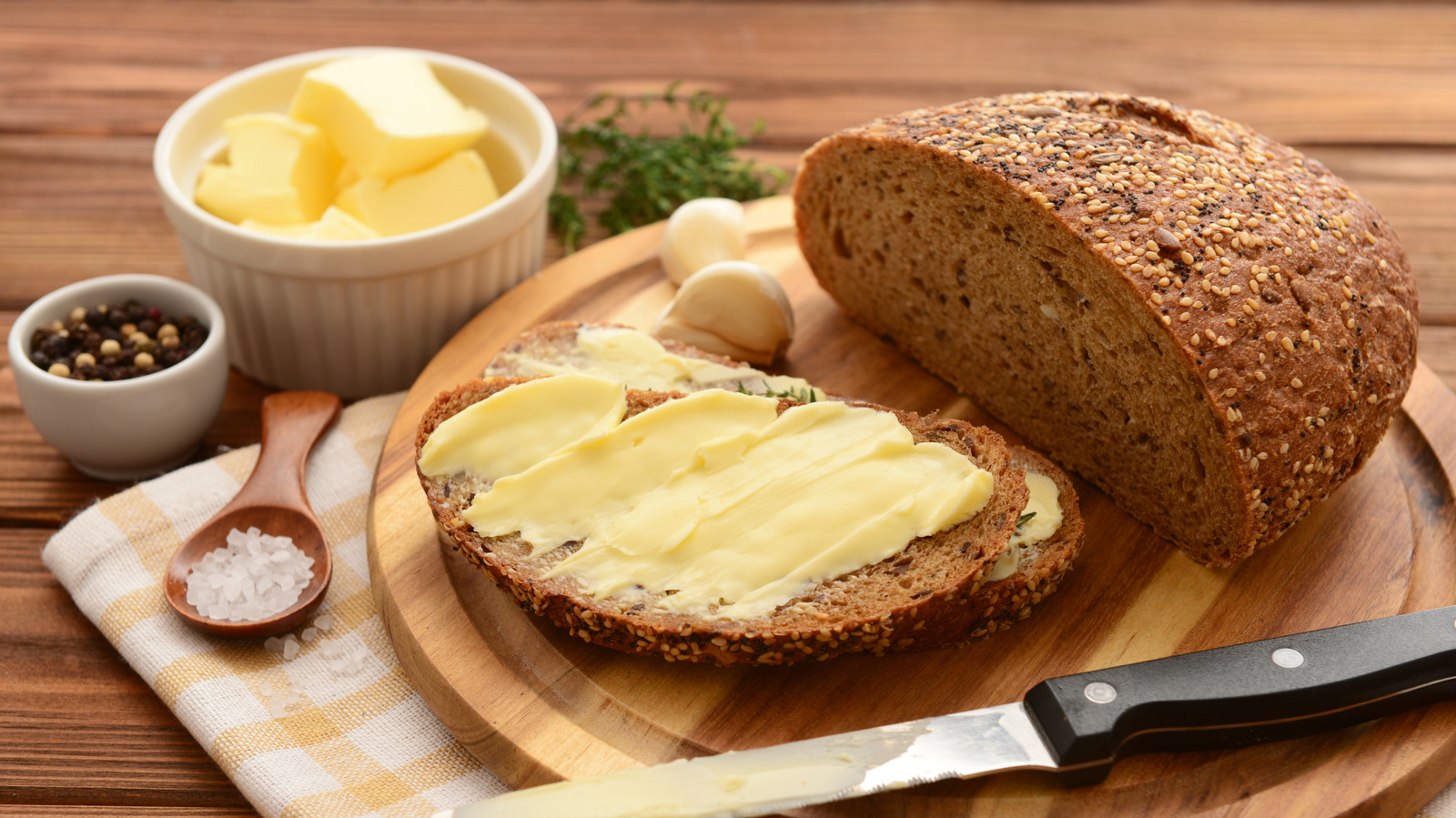
"European dairy gets a lot of kudos, which goes double or triple in the highly finessed world of European butter. Reasons are nuanced from one producer to another, but it often comes down to high butterfat content, live cultures, slow churning, and animal feeding practices, which can differ considerably from most American-made butters. Then, in a category all its own, lies the highly coveted French butters. Hailed by professional chefs and home cooks alike, it's especially transformative if you love good bread -"
"That butterfat content considerably informs the rich flavors and mouthfeel in French butters. Like most European versions, they require at least 82% butterfat, compared to the legal minimum of 80% in the United States. Some of the most coveted French butters go well above that percentage, landing at 84% or higher. If that sounds like a marginal difference, consider that water typically takes the place of butterfat in the lower percentages."
French butters typically contain higher butterfat—often 82% to 84% or more—than the U.S. legal minimum of 80%. Higher butterfat reduces water content, producing richer flavor, creamier mouthfeel, and better baking precision, yielding tender loaves, flakier crusts, and creamier sweet breads. Many French butters incorporate live cultures and are slow-churned, which adds complexity and a light tanginess. Grass-fed cows grazing on pasture soils and terroir contribute beta-carotene and distinct flavors. Artisan producers sometimes use traditional slow-churning methods, and regional practices and special statuses further differentiate varieties and quality. These factors make French butter highly prized by chefs and bakers.
Read at Tasting Table
Unable to calculate read time
Collection
[
|
...
]